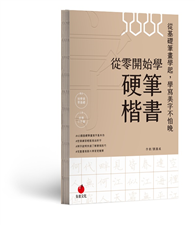This Book is carried out combining the concept of ergonomics and biomechanics by designing an intramedullary rod for the fractured human femur bone. Many failures in the human femur implantations are being encountered in post-surgical operations. One of the reasons is the inappropriate selection of the intramedullary rod material, dimensions and its designing. In this project, the ultimate strength of the original femur bone and the femur intramedullary rod are compared and the optimum length, material and optimum diameter of the rod are calculated using the data with respect to the height of 31 female individual humans. The optimization process is carried out using RANDOM SEARCH METHOD which is a type of non-gradient, unconstrained optimization technique. The softwares used in this work include, MATLAB for the calculation of femur strength, length and diameter, CATIA V5R20 for the designing and modeling of human femur bone and human femur intramedullary rod and ANSYS 16.0 for the analysis of the stresses acting on the designed models. Results of this work gives the optimized length and optimized diameter of the human femur intramedullary rod required for the 31 female human individuals considered with different heights. The designed model helps in the easy insertion of the intramedullary rod during surgery due to its simple design. These dimensions can be useful in further study and minimization of the femur implant failures.
| FindBook |
有 1 項符合
Application of Random Search Method for Selection of Optimum Ergonomic Femoral Intramedullary Rod的圖書 |
 |
Application of Random Search Method for Selection of Optimum Ergonomic Femoral Intramedullary Rod 作者:Ramaiah 出版社:Eliva Press 出版日期:2024-12-23 語言:英文 規格:平裝 / 106頁 / 22.86 x 15.24 x 0.56 cm / 普通級/ 初版 |
| 圖書館借閱 |
| 國家圖書館 | 全國圖書書目資訊網 | 國立公共資訊圖書館 | 電子書服務平台 | MetaCat 跨館整合查詢 |
| 臺北市立圖書館 | 新北市立圖書館 | 基隆市公共圖書館 | 桃園市立圖書館 | 新竹縣公共圖書館 |
| 苗栗縣立圖書館 | 臺中市立圖書館 | 彰化縣公共圖書館 | 南投縣文化局 | 雲林縣公共圖書館 |
| 嘉義縣圖書館 | 臺南市立圖書館 | 高雄市立圖書館 | 屏東縣公共圖書館 | 宜蘭縣公共圖書館 |
| 花蓮縣文化局 | 臺東縣文化處 |
|
|
圖書介紹 - 資料來源:博客來 評分:
圖書名稱:Application of Random Search Method for Selection of Optimum Ergonomic Femoral Intramedullary Rod
Application of Random Search Method for Selection of Optimum Ergonomic Femoral Intramedullary Rod 相關搜尋
Karamu Artists Inc.: Printmaking, Race, and CommunityIn Progress (Revised Edition): See Inside a Lettering Artist’s Sketchbook and Process, from Pencil to Vector
The Wonderful World of Women’s Watches: Beauty Beyond Time
Through Witnessing
Stencil in Use: A Collection of Stencil Typefaces
AI as Augmenting Intelligence: Praiority to Enhance Human Judgement Through Data and Ai.
AI as Augmenting Intelligence: Praiority to Enhance Human Judgement Through Data and Ai.
The Book: A Cover-To-Cover Exploration of the Most Powerful Object of Our Time
Codesign: People Participation Practice
Monstrous Beauty: A Feminist Revision of Chioiserie
|










